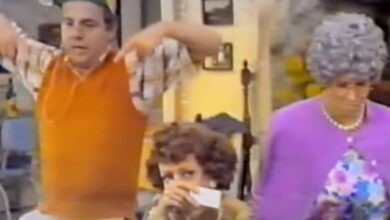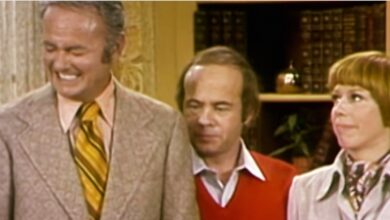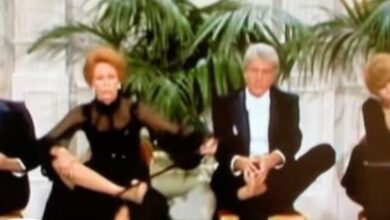The Tremeloes Brought Energy and Timeless Charm to Their Vibrant Rendition of “Here Comes My Baby”
Among the most vibrant gems of 1960s British pop, few recordings embody the spirit of that golden era quite like The Tremeloes’ buoyant 1967 hit, *“Here Comes My Baby.”* With its infectious energy and sing-along charm, the track not only catapulted the band to new heights but also illustrated the harmonious relationship between gifted songwriters and visionary performers at a time when pop music was undergoing radical transformation.
The song’s journey began with the introspective and poetic mind of Cat Stevens, a rising star in the UK music scene during the mid-1960s. Written in 1966, *“Here Comes My Baby”* was initially shelved as Stevens’ record label pushed his debut single *“I Love My Dog”* instead. While Stevens’ own recording of the song simmered in obscurity, it would find a second life in the hands of a very different band.
The Tremeloes, a beat group rooted in Dagenham, Essex, had spent the better part of a decade refining their sound. Originally formed in 1958 and known as Brian Poole and the Tremeloes, the group was heavily influenced by American rockers like Buddy Holly. They gained early traction on the British music circuit but were still in search of an identity that could withstand the changing musical tides.
In a twist of fate that’s now legendary, Decca Records chose to sign The Tremeloes over another aspiring band—the Beatles—in 1962. Their choice, based partly on geography and accessibility, gave The Tremeloes their initial break. While the Beatles soon eclipsed all expectations, The Tremeloes carved their own path, enjoying hits like *“Twist and Shout”* and *“Do You Love Me”* during the early ’60s. Their evolution continued when lead singer Brian Poole exited in 1966, leaving the band to reinvent themselves.
Poole’s departure forced the remaining members—Alan Blakley, Rick Westwood, Dave Munden, and newcomer Len “Chip” Hawkes—to craft a new sound that reflected the shifting pop landscape. The result was a leaner, more upbeat version of the group, which would soon find its stride with Cat Stevens’ *“Here Comes My Baby.”* Taking the song’s melancholic sentiment and flipping it into a high-energy pop single, the band struck gold with their reimagining.
Released in early 1967, The Tremeloes’ version of *“Here Comes My Baby”* exploded with a kind of melodic optimism that defined the Swinging Sixties. Their tight vocal harmonies, jangly guitars, and peppy rhythm section gave the song a new identity—one full of flair and youthful zest. The track quickly soared into the UK Top 10 and climbed to number 13 on the Billboard Hot 100, marking the band’s first major U.S. success.
This chart triumph marked a pivotal moment for both The Tremeloes and Cat Stevens. The band was suddenly catapulted into international stardom, while Stevens received newfound recognition as a songwriter of serious merit. It was a win-win that exemplified how collaboration—even indirect—between a writer and performer could yield unexpected success and open doors for both parties.
Following the success of *“Here Comes My Baby,”* The Tremeloes kept their momentum rolling with subsequent hits such as *“Silence Is Golden,”* a tender ballad that showcased their depth and vocal finesse. These songs expanded their reach and underscored the band’s adaptability in a rapidly changing musical climate. With their dynamic performances and radio-friendly sound, The Tremeloes became a fixture in the British pop canon.
The lasting charm of *“Here Comes My Baby”* continued to echo through the years, making its way into various films and television series. Its inclusion in Wes Anderson’s 1998 film *Rushmore* introduced the tune to a younger audience, reigniting interest in both the song and the band. Its cinematic placement proved how timeless pop melodies could find new life when framed in modern storytelling.
The genius of the song lies in its delightful contradiction: lyrics laced with heartache delivered in an exuberant, danceable package. This clever tension between subject matter and sonic tone is part of what keeps the song relevant. It resonates with anyone who has watched love slip away yet finds themselves smiling through the pain, buoyed by life’s rhythms and routines.
Beyond its commercial appeal, the song played a subtle yet vital role in the British Invasion—an era defined by the transatlantic success of UK artists in the U.S. The Tremeloes, with their clean-cut charm and polished sound, helped usher in a more accessible brand of British rock, opening the door for other groups to cross the Atlantic and find receptive audiences abroad.
While the band experienced its share of internal changes in the years that followed, *“Here Comes My Baby”* remained a defining track in their repertoire. It has since been covered by artists from diverse genres, with each rendition paying homage to the original’s sparkling structure while offering a unique spin. This versatility speaks volumes about the song’s sturdy composition and universal appeal.
Few tracks from the 1960s manage to capture the bittersweet thrill of lost love quite as joyfully as this one. The Tremeloes’ version of *“Here Comes My Baby”* distilled the optimism of a generation into a three-minute masterpiece that still invites dancing, singing, and the occasional tear decades later. It stands as a brilliant example of the kind of musical alchemy that defined the era.
Today, when revisiting the song, listeners are treated to more than just a catchy melody—they experience a slice of pop history. *“Here Comes My Baby”* endures because it speaks to the common thread of human experience while delivering it with irresistible flair. It’s a reminder that great pop music doesn’t age—it just waits to be rediscovered.
Whether encountered on a vintage vinyl, a movie soundtrack, or a curated playlist, the song continues to delight. Its staying power is a tribute to both Cat Stevens’ lyrical craft and The Tremeloes’ spirited interpretation. Their performance turned a modest tune into a cultural treasure, lighting up dance floors and airwaves from 1967 to today.
Decades later, *“Here Comes My Baby”* still bursts with life, reaffirming the enduring magic of a great pop song. It continues to serve as a touchstone for fans of all ages and remains a bright emblem of the joy, heartache, and timeless charm that defined a musical revolution. Thanks to The Tremeloes, that spark still shines just as brightly today.





